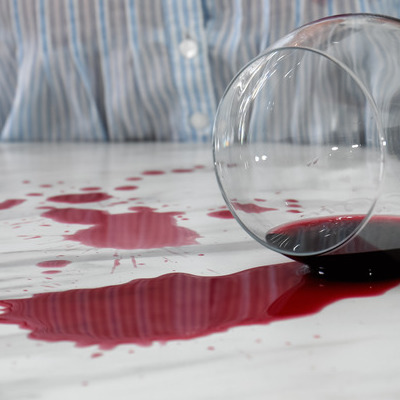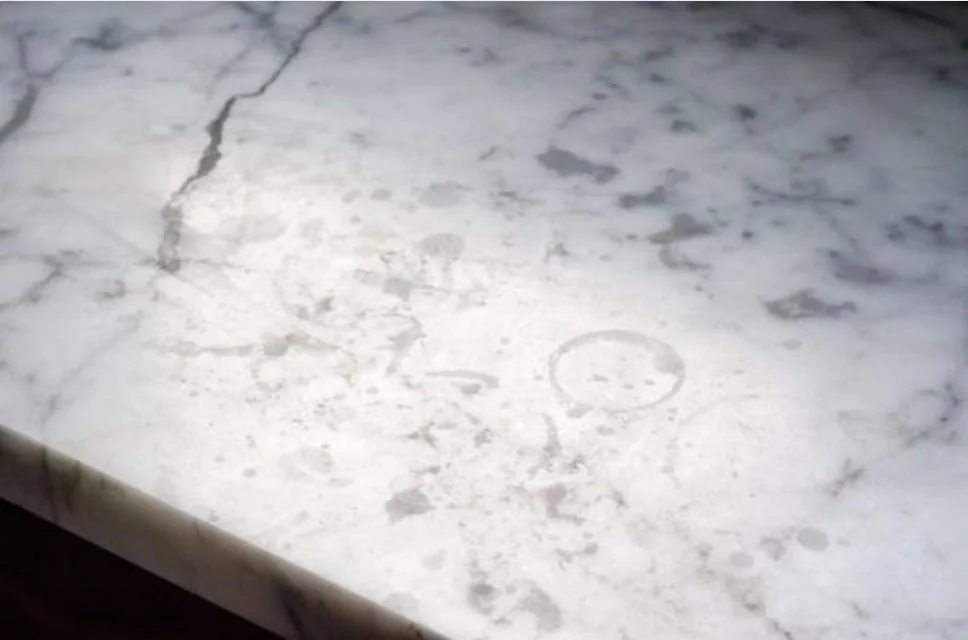We use cookies to ensure that we give you the best experience on our website. If you continue to use this site we will assume that you are happy with it. Learn more
How to Remove Stains from Marble & Porcelain Countertop
How to Remove Stains from Countertop

After investing in a stunning porcelain or marble countertop for your kitchen, you know that properly cleaning and maintaining it is the only way to preserve its natural beauty. Cleaning kitchen countertops is easy if you have the right tools and knowledge. For the best way to remove stains from countertops around your home, we've prepared a hit list of the best products and tops to keep your surfaces looking as good as new.
Visit the Tiling Logistics blog to learn more about the best restoration and protection products or guides to solve any problems you have.
Wine Stains

Removing wine stains is an infamously tricky task, but can be made simple with the right steps. We’ll cover the best method for removing wine stains and other liquids from your kitchen countertop.
Getting rid of wine stains with the right equipment
First of all, you’ll need Faber Coloured Stain Remover. As the name suggests, this solution removes various stains found on stone surfaces.
Use Against:
- Coffee
- Fruit Juice
- Ink
- Markers
- Tea
- Wine
You’ll also need a microfibre cloth and a spatula.
How to Remove Wine Stains from Countertops
1. Pour Faber Colour Stain Remover onto the Countertop
Pour a thick layer of this stain-removal product of the stain. Be sure to spread evenly with a spatula.
2. Let the product act
Allow time for Faber Coloured Stain Remover to extract the stain completely. The amount of time necessary will vary depending on the intensity of the stain, how long it has been there and its depth.
Wait time:
- Wine stains, coffee, tea, cola, food and drink: 30 minutes - 2 hours
- Marker pens and ink: 30 minutes - 3 hours
- Mould, algae and general residues: 15 minutes - 1 hour
3. Remove the solution
After enough time has passed, get rid of the product and the resulting residues with a microfibre cloth.
4. Rinse the surface
Pour a small amount of water onto the surface and pass over it again with a slightly damp cloth before assessing the results.
5. Repeat
If necessary, repeat the previous steps.
Water Stains

What you’ll need to get rid of water stains
You’ll need the SRP Water Ring and Etch Mark Remover.
SRP Water Ring and etch mark remover is a unique and easy-to-use polishing compound that is effective in getting rid of a range of unwanted marks and defects on your surfaces. For professional-grade results when polishing natural stone surfaces and repairing etch marks, there is no better choice than this stone polish
1. Wet the surface
Before anything else, you must wet the surface with a spray bottle.
2. Apply a small amount of SRP Water Ring & Etch Mark Remover
Then, apply a small amount of powder to the stained area. This results in a toothpaste-like consistency.
3. Rub the paste
With a microfibre cloth in hand, rub the surface in a circular motion until it is dry. Afterwards, spray more water onto the surface and rub in a circular motion again.
4. Buff the surfaces
Buff the stained area in back-and-forth motions with a clean microfibre cloth until dry.
Oil & Grease Stains

Oil and grease stains are common in the kitchen, whether during cooking or eating. Removing these stains as soon as possible is the best way to keep your kitchen surfaces looking pristine.
Remove oil & grease stains with the right equipment
For this, you’ll need Faber Oil & Grease Remover. This stain remover gets rid of all common types of oily or greasy stains you’ll come across.
Get rid of:
- Cooking Oil
- Diesel Oil
- Engine Oil
- Fuels
- Greasy Food Residues
- Lubricants
- Mineral Oil
You’ll also need a spatula and microfibre cloth.
How to remove oil and grease stains from countertop
1. Rinse the surface with water
Before anything else, give the area a good rinse with water and let it dry.
2. Apply Faber Oil & Grease Remover
Apply a generous amount of the stain remover to the surface with a spatula.
3. Leave to act
Approx. wait time:
- Non-absorbent surfaces or light residues: leave for 10-20 minutes
- Absorbent surfaces or stubborn residues: leave for 1-4 hours
- Particularly stubborn residues: leave for 12-24 hours
4. Remove the residues
Get rid of the product and resulting residues with a microfibre cloth. If necessary, use a spatula to scrape away the residues.
5. Wipe the surface
Wipe the area with a damp cloth or mop.
Ink Stains

Removing ink stains requires more than just soap and water. Even a common cleaning agent may do more harm than good, making a larger mess. Instead, we suggest Faber Graffiti Remover for graffiti and ink stains.
What You'll Need
Faber Graffiti Remover is a quick and easy-to-apply solution for ink and graffiti stains that immediately takes action without altering the appearance of stone surfaces.
In addition, you should have a microfibre cloth and a spatula spreader.
Remove Inks Stains from the Countertop
1. Apply Faber Graffiti Remover
Pour the stain remover directly onto your surface and spread evenly using a spatula or paintbrush.
2. Allow time to act
Leave the product to act and break down the stains.
Waiting Time:
- Non-absorbent surfaces or light residues: leave for 10-20 minutes
- Absorbent surfaces or stubborn residues: leave for 1-4 hours
- Particularly stubborn residues: leave for 12-24 hours
3. Remove the residues
Wipe away the product and resulting residues with a damp microfibre cloth.
Rust Stains

It is always best to tackle rust stains as soon as possible. Long-standing stains penetrate deep into the surface leading to discolouration.
To fight against rust stains, we recommend Faber Mar Gel Plus. This rust stain remover deeply penetrates the stone surfaces and gets rid of rust in thick materials.
Remove Rust Stains
1. Completely clean and dry surfaces.
Before using Faber Mar Gel Plus, completely clean the surface, remove any dirt, dust and debris.
2. Apply Mar Gel Gel Plus
Pour a generous amount of this undiluted solution onto the surface. Use the paintbrush or spatula to completely cover the surface in a thick layer of the rust stain remover.
Mar Gel Plus creates a purple compound during the rust stain removal process.
3. Wait for the Mar Gel Plus to act
Allow time for the product to act and the rust stain removal process to finish. The time needed depends on the intensity of the stain, the depth and stubbornness.
Coloured Stain Removal Time:
- New and pale rust stains: 5 - 20 minutes
- Deeper, medium-toned rust stains: 30 minutes - 3 hours
- Long-standing, dark rust stains: 4 hours - 10 hours
4. Get rid of any residue
Afterwards, remove any remaining solution and residue with a clean cloth.
5. Read Our Rust Stain Removal Blog
Tiling Logistics already has an in-depth blog explaining the complete process on getting rid of rust stains. Visit this article to learn how to remove rust stains.
More Information
To hear more information about polishing granite counters and floors, don’t hesitate to get in contact. We at Tiling Logistics are more than happy to answer any questions.
To speak to our team, give us a quick call at 0121 773 9129 or send a message online.
Remember to visit the Tiling Logistics blog to learn more about the best restoration and protection products or guides to solve any problems you have.

